 |
| An uncontrolled mid-block crossing in St. Petersburg |
This study was originally published on the website walkinginfo.org, and is republished with permission. View the original post for more information or to contact the study authors.
Problem
Multi-lane, high-speed roadways made uncontrolled pedestrian crosswalks unsafe. The motorist yielding compliance rates were less than 2% overall at these crosswalks.
Background
Motorists often fail to yield to pedestrians in crosswalks. Many serious pedestrian-vehicle crashes happen at uncontrolled mid-block crossings. When motorists do stop for pedestrians, other motorists sometimes try to pass the stopped motorist. This situation can lead to screening crashes. The City of St. Petersburg, Florida has over 100 uncontrolled crosswalks, and as of 2003 its pedestrian injury rate of 49.23 per 100,000 people was higher than both the county's and the state's rates.
Solution
In 2003, the City of St. Petersburg listed enhancements to uncontrolled crosswalks as a top priority in its CityTrails - Bicycle Pedestrian Master Plan.
 |
The same mid-block crossing equipped with
the four-beacon RRFB system |
At that time, a vendor offered to install a new traffic control device, the Rectangular Rapid Flash Beacon (RRFB), under crosswalk signs at two uncontrolled crosswalk locations. RRFBs are user-actuated rectangular amber LEDs that produce a wig-wag flash sequence to warn motorists to yield to pedestrians in the crosswalk. The City agreed to let the vendor install the RRFBs, and it conducted studies at the two crosswalks and analyzed the results.
RRFBs were an attractive alternative to traffic signals and hybrid signals because their cost of $10,000-$15,000 for the purchase and installation of two units was significantly less expensive than other options. The solar power needed to operate the LED beacons also reduced operating costs.
The City, under Permission to Experiment, compared pedestrian crossing compliance of the RRFBs to dual overhead round amber flashing beacons and side-mounted round flashing beacons at the two crosswalks. Both of these round beacons produced disappointing yielding compliance rates of 15.5% for the dual overhead round beacons and 11.5% for the side-mounted round beacons. The City experimented with two-beacon RRFB systems and four-beacon RRFB systems at the same crosswalks, for comparison. Four-beacon systems allowed for the placement of beacons in the center median, which gave motorists traveling on inside lanes of multi-lane roadways a better view of activated beacons. In all cases, there were yield markings at 30 feet in advance of the crosswalks that were used in conjunction with the RRFBs to alert motorists of upcoming crosswalks and to encourage them to stop in advance of the crosswalk to reduce the chance of a screening crash.
Results
The initial success of the RRFBs at the two crosswalks led the City to install 17 more RRFBs and conduct a two-year review of the 19 crosswalks, during which over 16,000 individual crossings were evaluated. As a result of this two-year study, it was determined that RRFBs led to sustained yielding over time. The baseline yielding percentage prior to the installation of RRFBs was 2%. The graph below shows the average yielding compliance results over time at the sites. Please note that the averages at 7, 30, 90, 270, and 365 days used data from all 19 sites, while the average at 60 days was compiled with data from 17 sites, the average at 180 days was compiled with data from 13 sites, and the average at 730 days was compiled with data from 17 sites.
The RRFBs performed equally well at night. One site at 1st Street just south of 37th Avenue North had a yielding percentage of 99.4% at night when using the four-beacon system. The yielding compliance rate was dramatically higher than the baseline nighttime percentage of 4.8%. This increase in yielding percentage at night can probably be attributed to LED lights being very visible at night.
 |
| (Graph created using data from Van Houten, R. and J. Shurbutt. Effects of Yellow Rectangular Rapid-Flashing Beacons on Yielding at Multilane Uncontrolled Crosswalks, Report No. FHWA-HRT-10-043, Washington, DC, September 2010) |
The research also showed that the four-beacon system produced a statistically significant increase in motorist yielding compared with the two-beacon system. The average increase in yielding from the baseline to a two-beacon system was 18.2% to 81.2%, while the four-beacon system led to an average increase in yielding of 87.8%. RRFBs improved the yielding distance as well. There was a 9% increase over the baseline in yielding at greater than 30 feet in advance of the crosswalk when using the four-beacon system, and yielding at greater than 100 feet in advance of the crosswalk almost doubled. Greater yielding distances made crosswalks safer for pedestrians because the pedestrians had a better view of approaching vehicles in all oncoming lanes. The increases in yielding percentages and yielding distances also led to fewer vehicles attempting to pass yielding vehicles.
The installation of RRFBs and advance yield markings greatly improved mid-block crossing safety in St. Petersburg. As of May 2012, the City of St. Petersburg had 42 RRFBs with advance yield markings in place with another 20 to 30 scheduled for 2014.
References
Van Houten, R. & Malenfant, J.E.L.. Efficacy of Rectangular-shaped Rapid Flash LED Beacons.
http://mutcd.fhwa.dot.gov/resources/interim_approval/ia11/stpetersburgrpt/stpetersburgrpt.pdf
Van Houten, R. and J. Shurbutt. Effects of Yellow Rectangular Rapid-Flashing Beacons on Yielding at Multilane Uncontrolled Crosswalks, Report No. FHWA-HRT-10-043, Washington, DC, September 2010.
http://www.fhwa.dot.gov/publications/research/safety/pedbike/10043/10043.pdf













